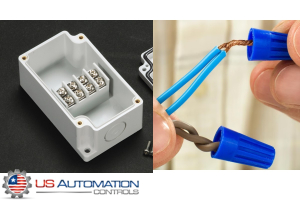Monthly Archives: April 2024
-
- April 23, 2024
An optocoupler and a relay play a very similar role in circuits, but they operate differently and offer specific advantages and disadvantages. To understand these differences we need to understand how each one operates first.
Optocouplers
How It Works
An optocoupler, also known as an opto-isolator, is a semiconductor device that transfers electrical signals between two isolated circuits using light. An optocoupler is made up of an LED on the input and a photodetector on the output side. When a voltage is applied to the LED, it turns on, emitting light which the photodetector picks up causing it to conduct electricity.
The Advantages
Optocouplers provide electrical isolation between input and output circuits, protecting sensitive components from high voltages or voltage spikes. They are commonly used in applications where electrical noise, high voltages, or potential differences between circuits need to be isolated, such as in industrial control systems and power supplies. In general, optocouplers




